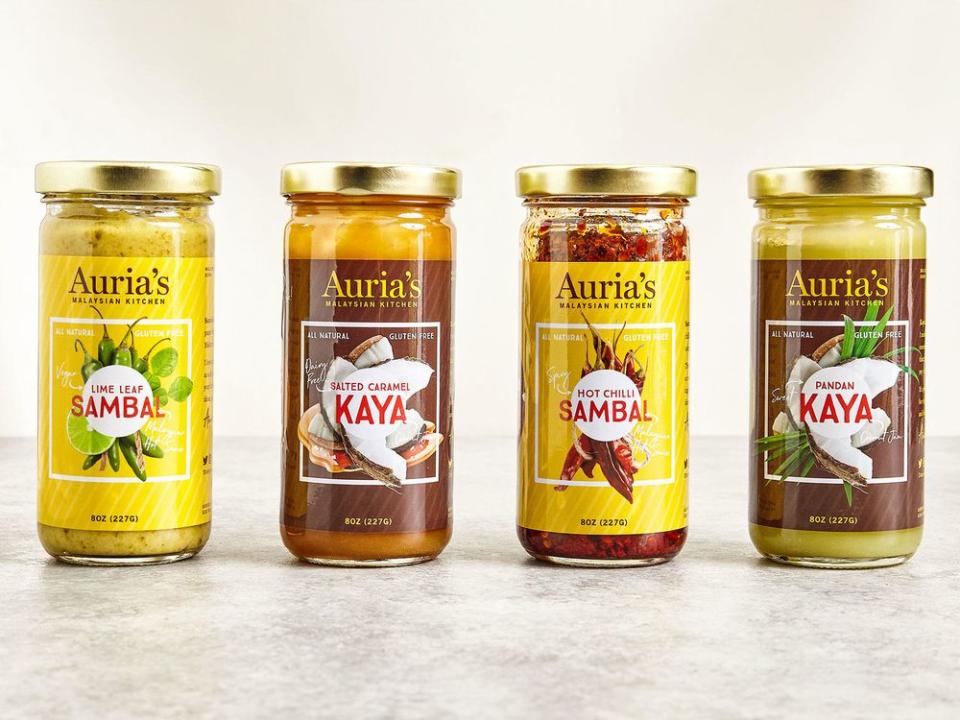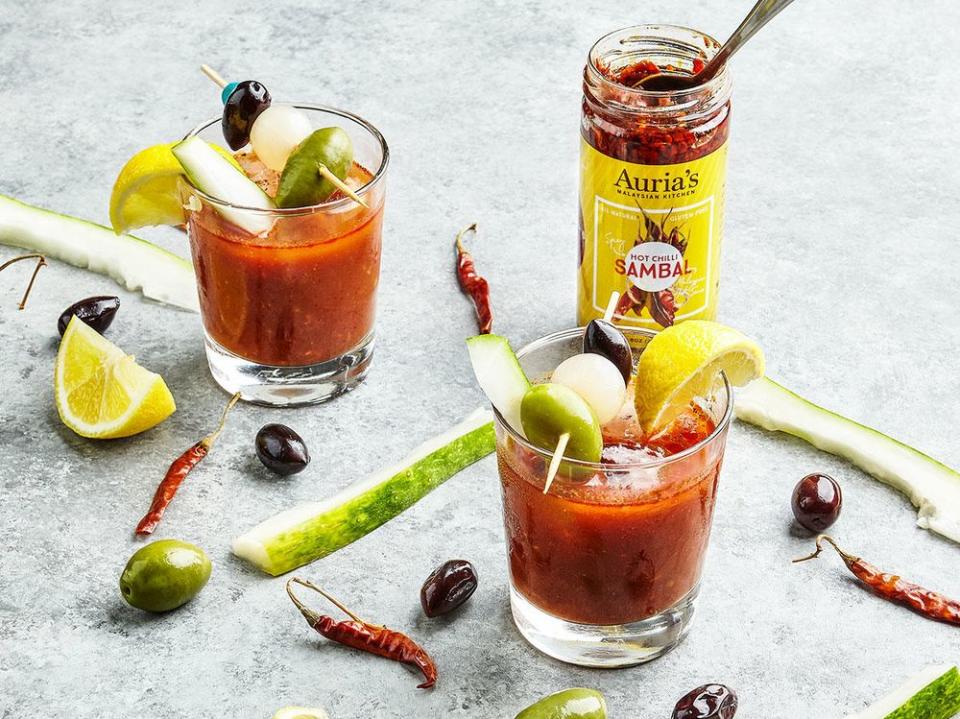Why Is America Still Sleeping On Malaysian Condiments?
As you stroll the aisles of your grocery store, you might miss the Auria’s Malaysian Kitchen products. The brand’s packaging is humble, but the flavors inside pack major heat. The line of sauces, which runs the gamut from lime leaf sambal to pandan kaya, can be found all over New York City, from Kalustyan's to Blue Marble. Auria Abraham is at the helm of the business which has given a much overdue bump in recognition to the country’s cuisine. Nevertheless, the U.S. (and its white-dominated food scene) has yet to fully embrace these wonderful South East Asian condiments the same way as they have East Asian ones like sriracha and kimchi. Why is that?
First, we can look at migration patterns. “Life is pretty comfortable there. There’s still so much opportunity in Malaysia, given how oil-rich it is. We’re not running to the United States as refugees,” Abraham told me. “In general, there’s not so many of us [in America] as there are folks from other countries like Thailand or Vietnam.”

There’s also a marketing problem: Malaysia’s ethnically-diverse population cooks diverse food that is ever-changing and hard to quickly sum up. Their complicated cuisine combines Chinese, Indian, and Malay influences with enforced elements from European colonization. “If people don’t know the cuisine, they’re less likely to cook it and use the condiments. And if a cuisine isn’t popular, the media in general won’t cover it,” said Pat Tanumihardja, author of The Asian Grandmothers Cookbook: Home Cooking from Asian American Kitchens.
A former Chopped contestant, Abraham was born and raised in the tiny Malaysian town of Seremban. Growing up, she was surrounded by her mother’s cooking and learned about Southeast Asian herbs and spices like fenugreek and cardamom. Later this year, Abraham will embark on a culinary adventure to Malaysia, highlighting the beautiful bounty of the country’s culinary offerings. Abraham takes the trip takes every year with her brothers who live there year-round, but this time she’s inviting anyone looking to expand their palates. The tour will begin in Malacca, an hour south of her hometown, which Abraham says “is basically where Malaysia [as we now know it] started. It’s a port town and it was highly sought after by sailors and trade routes, which the Dutch colonized, then the Portuguese, and then British kicked them out.” Abraham is careful about creating an experience that exposes Americans to the cuisine, without there being a dynamic of appropriation of their food traditions that would carry on the “othering” rooted in the country’s colonialist history.
The tour will also go to Kuala Lumpur and Penang. Guests will eat at Abraham’s favorite spots and learn about the techniques and ingredients along the way through Chinese banquet dinners, Indian banana leaf lunches, and heritage Nyonya delicacies. “For people who would go as tourists, it would be hard for them find these spots. In Malaysia, the food scene is constantly changing. The favorite from last year aren’t necessarily the same from this year,” she said. Tickets can be purchased here.

For what it’s worth, many core Malaysian ingredients are available on supermarket shelves, but they aren’t necessarily known to many Americans as such. For example, sambal belacan, a fiery chili paste, is quite similar to Thai nam phrik kapi. “It’s ubiquitous in South East Asian cuisine, in different forms, but we use one that comes in a dark brick shape. Whereas in Cambodia, it might be pink and have a toothpaste-like texture,” Abraham said.
At least in New York City, interest in Malaysian food is growing. Kopitiam, an all-day cafe by Penang-born chef Kyo Pang in Manhattan’s Chinatown, has garnered international press and an over-enthusiastic fan base for its Chinese Peranakan dishes (a marriage of Malaysian, Indonesian, and Chinese cuisines). Named after the Malay-Hokkien portmanteau for coffee shop, Kopitiam serves the country’s national dish: coconut rice, fried anchovies, cucumber, peanuts, and hard boiled egg alongside curry puffs and lobak (deep fried five-spice pork roll wrapped in beancurd sheets).
Abraham recently did a Malaysian food pop-up in Chinatown. “There were all Chinese people coming to my table, and you don’t necessarily know where they’re from—mainland China, Singapore—yet they all had kayan [coconut jam] growing up,” she said. “They had had different names for it; some called it kayang. We all grew up in different places and had this ingredient tying us together.”
As the U.S. grows more familiar with Malaysian condiments, I hope beautiful new collaborations will blossom that pay respect to this nuanced cuisine. A recent customer of Abraham’s messaged her to say that she had been using her hot chili sambal as a Bloody Mary mix. Another said that he’d been using her coconut jam in chicken stew. “I didn’t have the heart to tell him that it was meant to be spread on bread, like Nutella,” Abraham said. “But, I think it’s so nice.”


